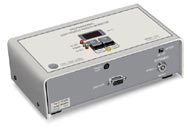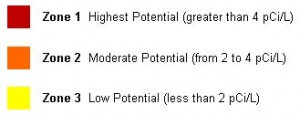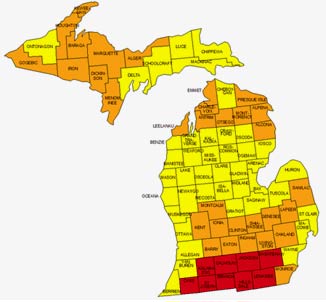
If the home has not yet been tested for radon….
It is probably a good idea to consider a radon test whether you are buying or selling a home. Chances are if your company relocates you, they will want a radon test performed on your home. Having a radon test is an inexpensive price to pay to ensure your home/building is safe for you and your family.

The EPA recommends that you take action to reduce your home’s indoor levels if your radon test results is 4pCi/L or higher. If you are selling your home, it is suggested that you have these levels reduced prior to listing it. However, if elevated levels are found during the real estate transaction, the buyer and seller should discuss the timing and costs of the radon reduction, as with any aspect discovered during due diligence.
The cost to correct high radon levels depends on how you home was built and other factors. Most homes can be fixed for about the same costs as other common home repairs, like replacing rotten wood or replacing a water heater. The average cost for a Qualified Radon Mitigation Professional to lower radon levels in a home is about $1200, although this can range form $500 to about $2500.
Okay…I want my house or building tested for radon…what happens now?
The first step is to contact Oakland Home Inspections. Following EPA standards, please note that you will be required to keep your windows and doors closed (except for normal entry and exit) for a time period of at least 12 hours prior to the placement of the Continuous Radon Monitor (CRM). A CRM measures the radon levels continuously every hour on the hour during a test. The EPA suggests that a radon test be conducted anywhere from 48 hours to 7 days. Typically, Oakland Home Inspections tests radon levels for a period of 48-72 hours. During the test, all windows and doors must be kept closed except for normal entry and exit of doors. Signs are posted at all exterior doors and tamper resistant tape is placed on wall windows.
A CRM measures the radon levels continuously every hour on the hour during a test. The EPA suggests that a radon test be conducted anywhere from 48 hours to 7 days. Typically, Oakland Home Inspections tests radon levels for a period of 48-72 hours. During the test, all windows and doors must be kept closed except for normal entry and exit of doors. The CRM is placed on a table approximately 3-4 feet above the floor near the center of the house. Also, it must be placed at the lowest living space. The CRM cannot be touched, moved or disturbed in any way or the test is null and void. Additional considerations are discussed with the testing specialist at the time of the CRM placement.
EPA Map of Radon Zones
MICHIGAN
The U.S. EPA and the U.S. Geological Survey have evaluated the radon potential in the U.S. and have developed this map to assist National, State, and local organizations to target their resources and to assist building code officials in deciding whether radon-resistant features are applicable in new construction. This map is not intended to be used to determine if a home in a given zone should be tested for radon. Homes with elevated levels of radon have been found in all three zones. All homes should be tested regardless of geographic location. The map assigns each of the 3,141 counties in the U.S. to one of three zones based on radon potential. Each zone designation reflects the average short-term radon measurement that can be expected to be measured in a building without the implementation of radon control methods. The radon zone designation of the highest priority is Zone 1.

Oakland Home Inspections
(248) 787-4366
www.OaklandHI.com


